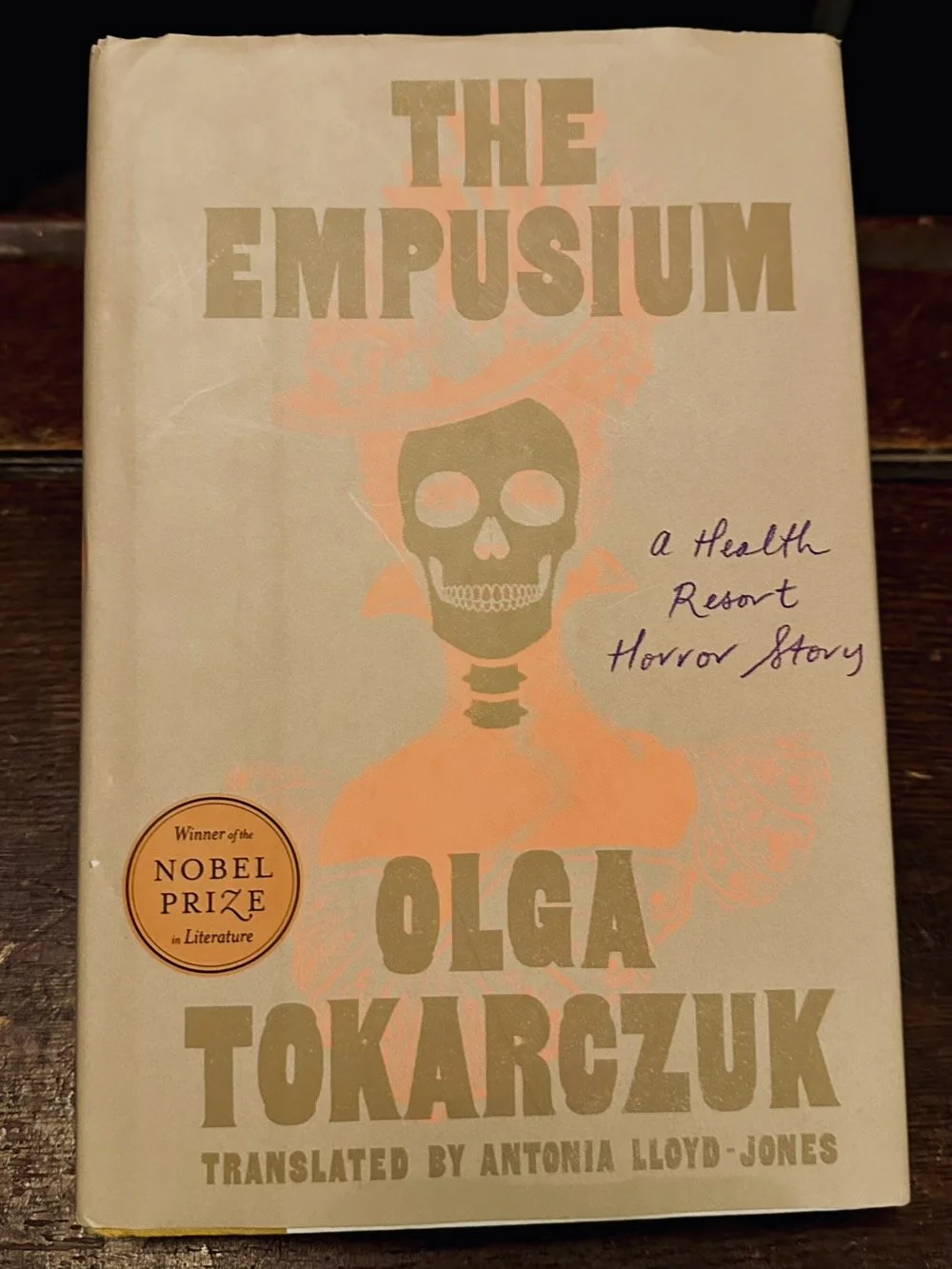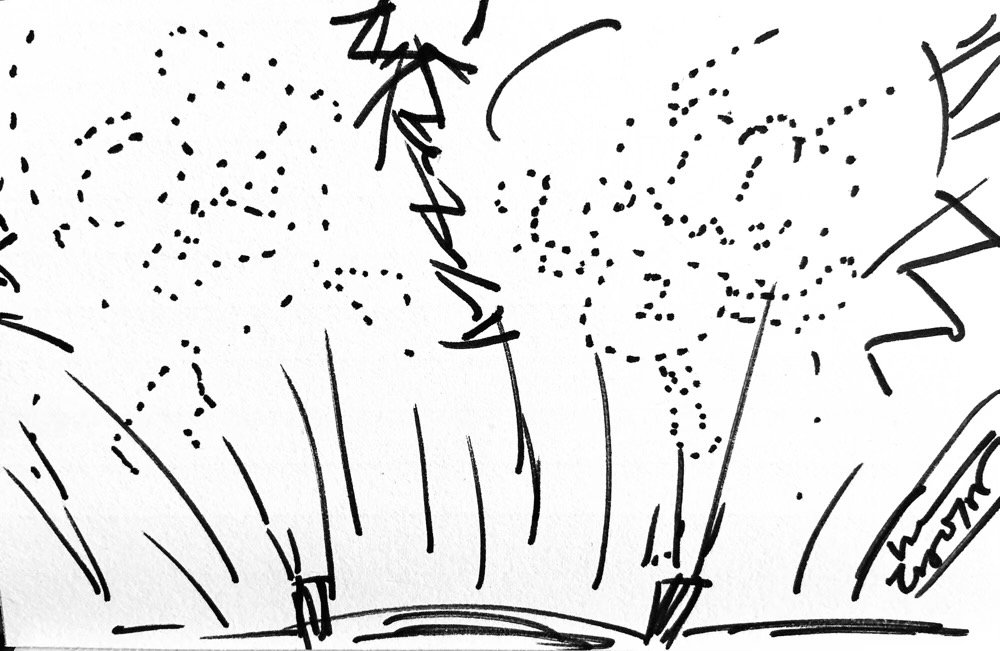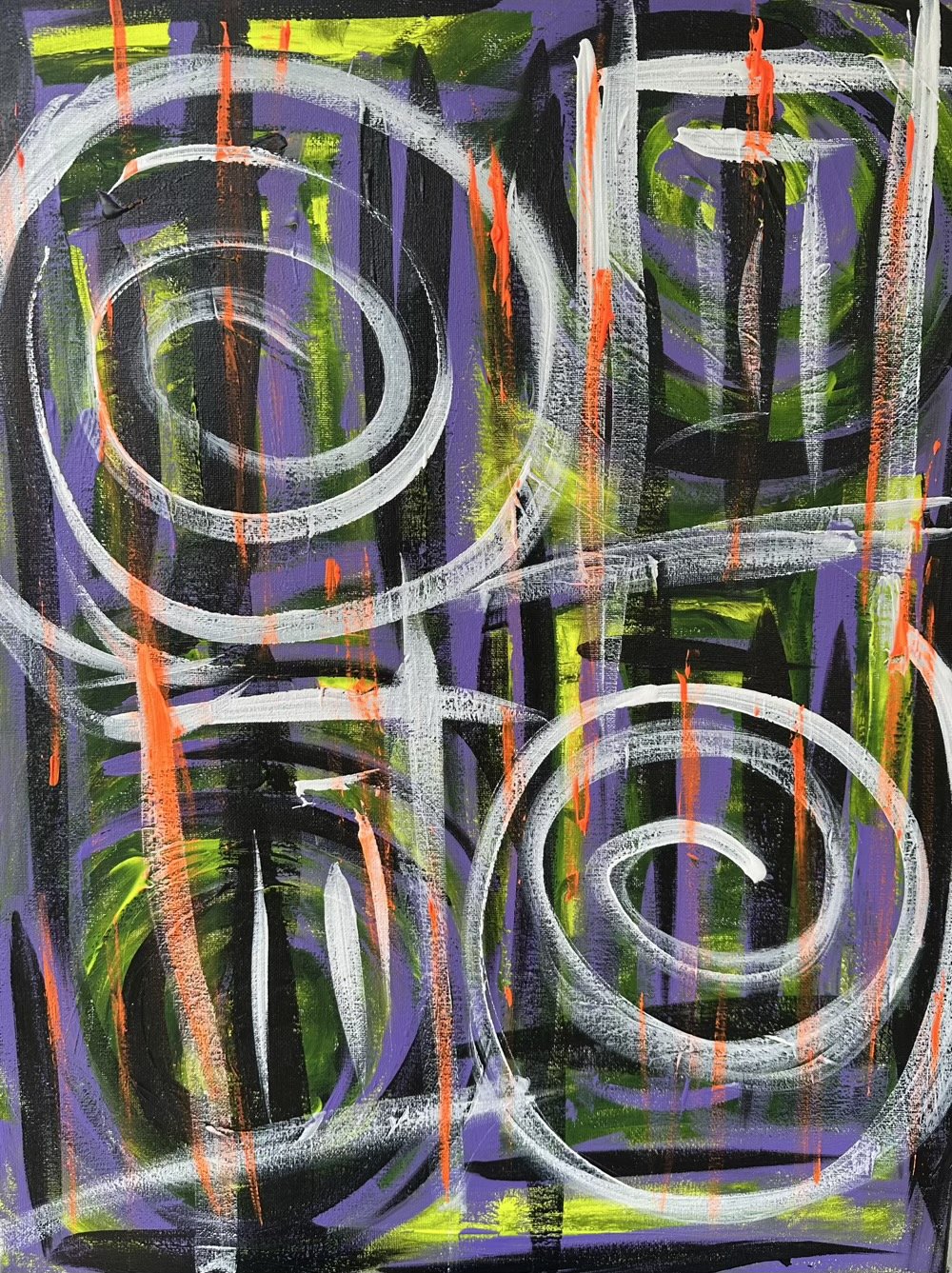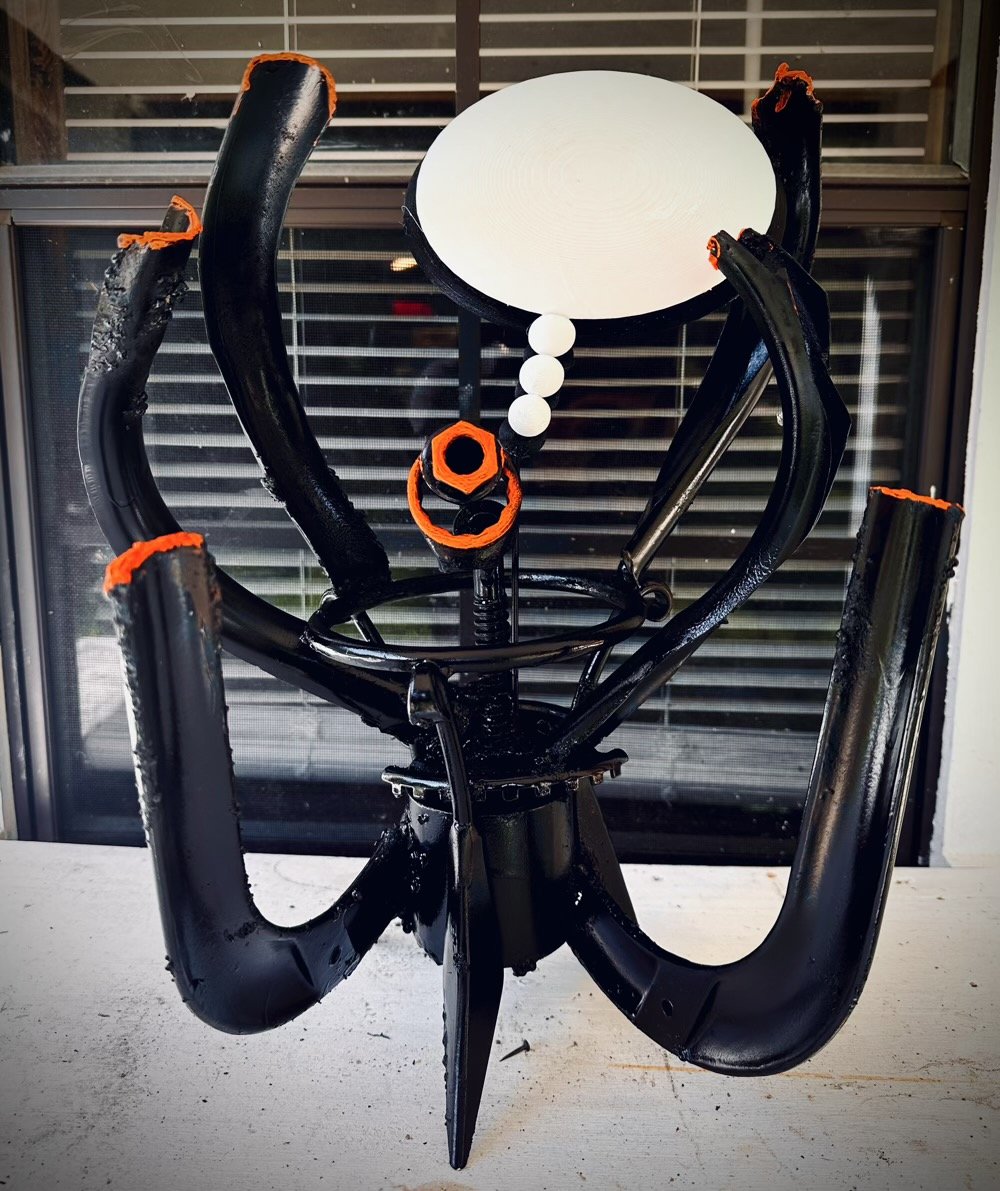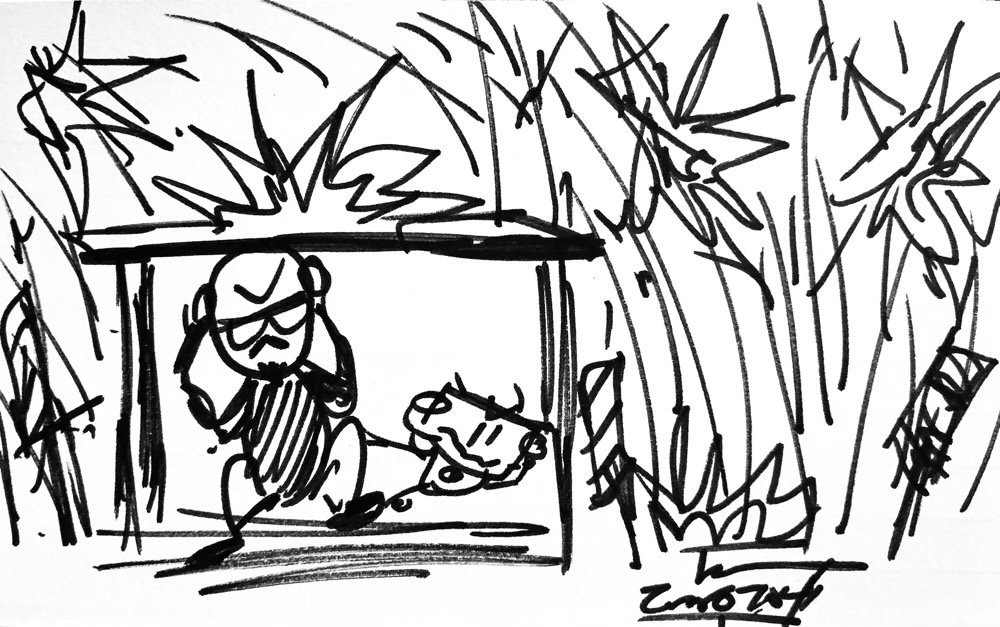a big fucking corkboard
For the first time in more than 10 years I've a raging desire to buy a big fucking corkboard and fill it with index cards with scenes and scraps and phrases and stuff on them (in no particular order), a desire to bring the tactile prototyping approach to thinking that metal (or cardboard and tape) brings to the present (and far-preferred) iteration of my creative practice. Not sure what these hypothetical cards are meant to become – I remain proudly medium agnostic until the time comes to declare my project-faith – though I do know it will be something a.) I can do on my own (or learn to do on my own) and/or b.) nifty, the latter of which is really all that interests me these days. Or, perhaps, it's all just a desire to redecorate The Shed and make one of the walls more useful than as a shelf for things that could and probably should be shelved elsewhere because they're going to fall on me any day now.
metal_0038 :: squibs
Latest Shed-friend, a re-do of one of my earliest pieces and another chance to combine 3D printing and design (the thought / word balloon) with metal (everything else). Most of Squibs was, once upon a time, a plant stand, chainlink fence post, a wrench, and a glockenspiel frame.
3D printed T1D treatment?
🤯
To achieve that high density, Perrier and his colleagues 3D printed islets from a “bioink” made of human pancreatic tissue and alginate, a type of carbohydrate derived from seaweed. Live insulin-producing cells were mixed into this material.
“We put this bioink with the [human] islet into a syringe, and we print a special motif [with it],” says Perrier. This porous grid is designed to allow new blood vessels to grow around and through the structure.
In the lab, this technique “works very well”, says Perrier, noting that about 90 per cent of the islets’ cells survived and functioned for up to three weeks. “The next challenge is really to validate this finding in vivo.” Perrier and his colleagues presented their research at the European Society for Organ Transplantation (ESOT) 2025 meeting in London on 29 June.
via New Scientist


